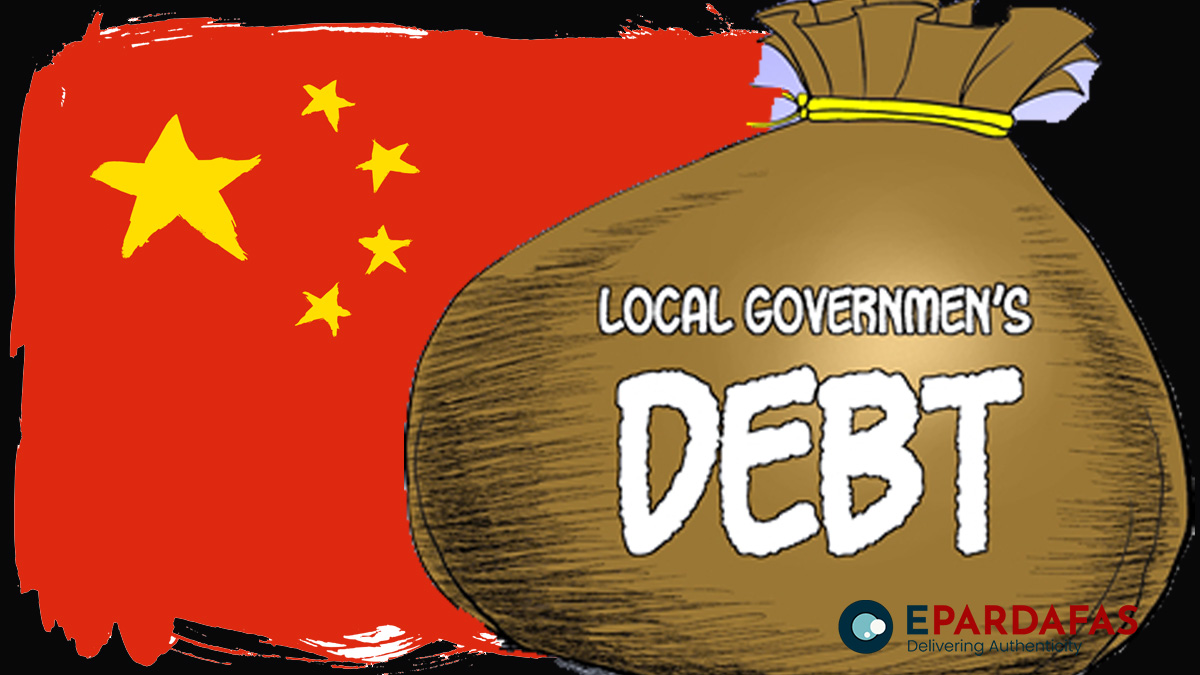
China Grapples with Soaring Local Government Debt, Triggering Economic Concerns
China’s economic landscape is being fundamentally reshaped by a mounting crisis stemming from local government indebtedness, with experts warning that this colossal burden, largely accumulated through intricate shadow banking mechanisms, is impeding the nation’s efforts to steer its economy through uncertain times. As policymakers search for a comprehensive solution, the escalating local government debt crisis threatens to disrupt the delicate balance between state and municipal authorities, casting a shadow over China’s economy.
Analysts reveal that the significant local government debt not only fuels discord between state and local entities but also impedes China’s attempts to boost the economy by ramping up infrastructure investments while simultaneously mitigating financial risks.
“The sums involved [in the local government’s debt pile] are substantial; almost double on-balance sheet local government debt as per estimates,” shared Robert Carnell, the Chief Economist for Asia-Pacific at ING Bank, based in Singapore.
Carnell’s estimation places local government debt at around 59 trillion yuan (approximately $8 trillion). However, according to the International Monetary Fund (IMF), the staggering local government debt has surged to an unprecedented 66 trillion yuan (approximately $9 trillion) this year, primarily sourced through the local government financing vehicle (LGFV) mechanism.
The sluggishness in China’s economic revival, particularly after reopening, has amplified concerns regarding LGFVs. The local government debt issue extends beyond the financial realm, potentially undermining social and economic stability, rendering its resolution a critical priority for the nation.
LGFVs, entities established by local governments to fund infrastructure and real estate ventures, operate outside the conventional banking framework, generating credit with limited regulatory oversight. Despite their role in the shadow banking system, they often benefit from government guarantees and can borrow from diverse sources.
However, these institutions, which are critical for local economic growth, are grappling with insurmountable debt levels. The unprecedented debt service challenges faced by LGFVs, coupled with the absence of land sale revenues, hinder these entities from funding substantial infrastructure development. Such stagnation in growth impedes China’s favored response to economic downturns—infrastructure spending.
Amid the local government debt crisis, the task ahead for China’s policymakers is complex. Balancing the need to invigorate the economy with the imperatives of financial stability and fiscal responsibility is a delicate endeavor. As the nation grapples with these multifaceted challenges, experts emphasize the necessity of devising sustainable strategies that alleviate debt pressures while sustaining economic growth.
China’s journey to economic resilience demands not only innovative solutions but also a comprehensive and coordinated approach that addresses the intricate interplay between debt, economic stimulation, and long-term sustainability.
















Comments